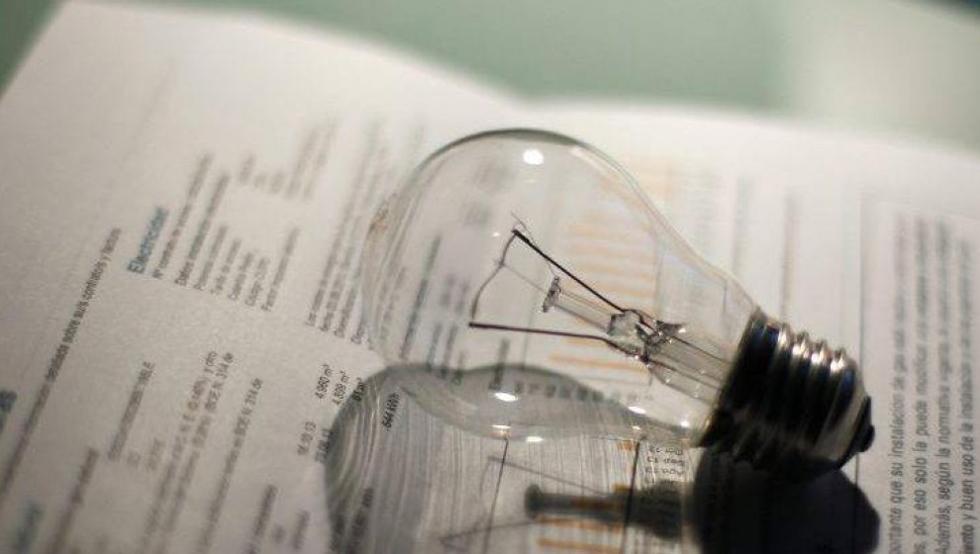From June 1, 2021, "to encourage consumption at times when the networks are less congested", a new structure of the electricity bill will come into force based on hourly discrimination and on giving greater weight to the term variable of the bill, which depends on the energy consumption, compared to the fixed one, which refers to the contracted power. These changes are introduced in the month of June and will be applied to all domestic consumers, regardless of whether they take advantage of the electricity tariff regulated by the Government through the Voluntary Price for the Small Consumer (PVPC) or if they are in the free market. They will allow savings based on the efficiency of their consumption, in line with what they say from the Ministry for the Ecological Transition and the Demographic Challenge, which also indicates that "energy saving, efficiency, self-consumption and the deployment of the vehicle will be promoted. electric".
The modifications to the invoice that will be introduced this June 1, among which stands out the one that will separate the contracted power from the demanded power on the receipt and "all excess power with respect to the contracted power will be billed," as indicated the National Commission of Markets and Competition (CNMC) in a clarifying note of the new electricity bill— are motivated by Royal Decree 148/2021, of March 9, which establishes the methodology for calculating the electrical system charges, available for consultation in the Official State Gazette (BOE).
The big change in the electricity bill is that the traditional access tolls, which paid for the regulated costs of the electricity system and had been frozen since 2018, will "be replaced by two new concepts", according to what they explain from the department led by Minister Teresa Ribera. These are the transport and distribution tolls, which are set by the CNMC, and the charges for the electrical system established by the Ministry for the Ecological Transition, "whose collection is used to finance system costs such as the special remuneration regime for renewable energies. , of cogeneration and generation with waste (RECORE), the coverage of the deficit of previous years or the compensation of 50% of the extra cost of generation in non-peninsular territories ".
With the combination of these new tolls, which were established at the beginning of 2020 and defined the electricity seasons and the different periods of hourly discrimination, and the charging methodology devised by the Government, the division of the electricity will become effective in the electricity bill. hours of the day in more expensive consumption segments, baptized as peak hours, and cheaper consumption segments because the networks are less saturated, they explain from the ministry, which will be known as off-peak hours. While the tolls for access to the transmission and distribution network will have an approximate weight of 20% in the electricity bill, according to the CNMC - on March 23, 2021, a provision of the CNMC was included in the BOE in which the prices of the terms of power and active energy that will be applicable as of June 1 are established, as well as the terms for excess power and discrimination coefficients thereof—; In the 'regulated part' of the price of electricity, that is, the one determined by the charges and in which capacity charges are also included, there will be a "greater variable component" that will make the cost depend to a greater extent on the consumed energy, "which promotes energy efficiency by allowing saving measures to have a greater impact on the user's bill," in line with what the ministry of Teresa Ribera defends.
In that part of the receipt, for low voltage consumers with "less than 15 kilowatts of contracted power", it is specified in the methodology for calculating the charges of the electrical system, the variable term calculated based on consumption will weigh 75 % —From the current 60 %—, at the same time that the weight of the fixed term calculated based on the contracted power is reduced, which will go from 40% to 25%. "For the rest of the consumers, 40% of the charges will be recovered through the fixed term and 60%, through the variable term," is also explained in the Royal Decree. Thus, a "binomial" design is proposed for the charges, in which it is considered "more appropriate to give a greater weight to the variable component in order to favor energy efficiency, self-consumption or the deployment of the rapid recharge infrastructure of electric vehicles". At this juncture, trading companies will have the obligation to inform consumers of the new prices.
More expensive (and cheaper) hours for consumers
All low voltage consumers, which includes homes and SMEs, will have hourly discrimination with regard to electricity consumption, which will be divided into three periods: peak hours, "in which the cost of tolls and the charges will be higher ", according to what they explain from the Ministry for the Ecological Transition; plain schedule, "with an intermediate cost"; and valley rate, "the cheapest of the three". These sections have been defined taking into account "the current demand profile", but will be reviewed "periodically" in order to take renewable production into account.
The domestic consumer supply will be controlled by the Power Control Switch (IPC). In this sense, "when the low-voltage consumer with a contracted power equal to or less than 15 kW demands a power greater than that contracted, a supply cut will occur"; They explain from the CNMC. In the case of not having ICP, the power control will be carried out through a maximeter and the excess power will be billed, the price of which will be published annually in a cost resolution. Before the new prices are regulated, however, there will be a transitional period to facilitate the adaptation of consumers during the current year and next year, 2022. Between June 1 and December 31, 2021, it will be maintained the current price; while in 2022, 50% of the price increase resulting from applying the methodology will be transferred.
The methodology for calculating electricity transmission and distribution tolls does not modify the type of contracts and establishes "only" surcharges that must be applied to contracts of duration "less than one year". In order to have a margin with which to adapt their energy consumption, domestic consumers will be able to contract two different powers: one for peak and flat periods and another for the valley. "In this way, those consumers who have higher power needs in the off-peak period, such as electric vehicle users who wish to charge their car or motorcycle at night at home, will be able to benefit from contracting a higher power and maintaining their power usual in the peak and flat sections, avoiding paying the extra cost of that extra power during all hours of the day ", they put as an example from the department. If the consumer does not request double power in a specific period, the current power contracted in both periods will be applied automatically, as detailed by the Ministry for Ecological Transition.
The National Commission of Markets and Competition allows consumers to modify, as of June 1, Tuesday, the powers contracted per period. This adaptation to the new structure will have no cost for the user until May 31, 2022, with the exception of those domestic consumers who need a manual action on their meter or, for the rest of the consumers, if the maximum is exceeded. of the powers that the consumer had contracted prior to June 1.
As detailed in Circular 3/2020, of January 15, of the National Markets and Competition Commission and the ministry also specifies in a press release, as of June 1 all consumers will pay a price different depending on the consumption schedule. The time discrimination will be regulated with the following sections, which will mark the most expensive and cheapest hours of consumption:
- Peak hours, the most expensive: includes, from Monday to Friday, between 10:00 a.m. and 2:00 p.m. and 6:00 p.m. and 10:00 p.m. In Ceuta and Melilla, the hours are from 11:00 a.m. to 3:00 p.m. and from 7:00 p.m. to 11:00 p.m., since the start of each strip is delayed one hour.
- Plain hours, with an "intermediate" cost: includes, from Monday to Friday, between 8:00 a.m. and 10:00 a.m., 2:00 p.m. and 6:00 p.m. and 10:00 p.m. and 24:00 hours at night. In the autonomous cities, this schedule includes the following bands: from 8:00 to 11:00; from 15:00 to 19:00 and from 23:00 to 24:00.
- Off-peak hours, the cheapest: includes, from Monday to Friday, between 24:00 and 8:00 in the morning and all hours on weekends and holidays
Once the new tariff system comes into force on June 1, the consumer must "react" and whoever "can, is upset, is interested and has the capacity to manage when the washing machine or oven is turned on", diverting their consumption to the Cheaper hours, you will save on your electricity bill, according to sources from the Ministry for the Ecological Transition, who have acknowledged that this will be "long-term", told Efe. These changes will benefit users under the PVPC, according to the department managed by Minister Ribera, to whom their reference marketers must apply the new prices for established hours, in line with what the CNMC explains about how the price will change. supply.
In the case of consumers who are in the free market, the marketer must choose between adapting the contract price to the new energy and power periods or maintaining the price ranges previously agreed in their contract "by transferring the price to the cost difference that would result for their consumption profile ". In any case, companies have a duty to inform consumers well in advance.


With this change in the electricity bill, the aim is to encourage the transfer of electricity consumption from the hours of maximum demand, the so-called peak hours, to others in which the transmission and distribution networks are less saturated, which will reduce the need for carry out new investments in said infrastructures and, in turn, will reduce future bills.



